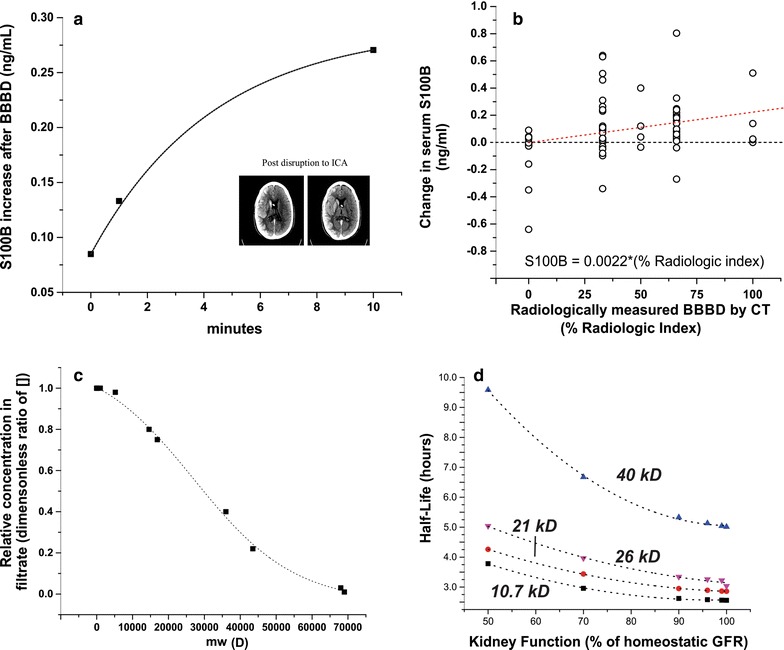Fig. 2.

Experimental and theoretical determination of blood–brain barrier characteristics, and quantitative assessment of the effects of biomarker molecular weight on modeling results. The kinetics of BBBD in this model were derived from data from previous studies that involved human patients receiving iatrogenic osmotic opening of the barrier. Time-dependent opening of the BBB was modeled in accordance with a, Eq. 2 which shows the time course of serum S100B elevation after intra-arterial infusion with 1.6 M mannitol. The extent at which serum S100B levels were affected by BBBD was modeled in accordance with (b, Eq. 3, see dashed red line); a radiologic scale of BBB opening shows that 0% BBBD promotes no change in serum S100B, while maximal BBBD causes an increase of ~0.22 ng/ml in serum S100B. Note the dashed black line indicating no change in S100B to show that when a BBB disruption >25%, most changes in S100B levels were positive. For details regarding procedures in a and b, see “Methods” section. The inset in a shows an example of contrast-enhanced CT imaging used to quantify BBBD. In this case, the hyperosmotic mannitol solution was perfused through the internal carotid artery (ICA). In addition to glomerular filtration rate, a biomarker’s Filtration Coefficient (CF) determines the rate at which a marker is cleared through the kidneys (c, Eq. 5), with proteins of higher molecular weight having a lower turnover rate from blood into urine. Figure d demonstrates the dependency of biomarker half-life on molecular weight
